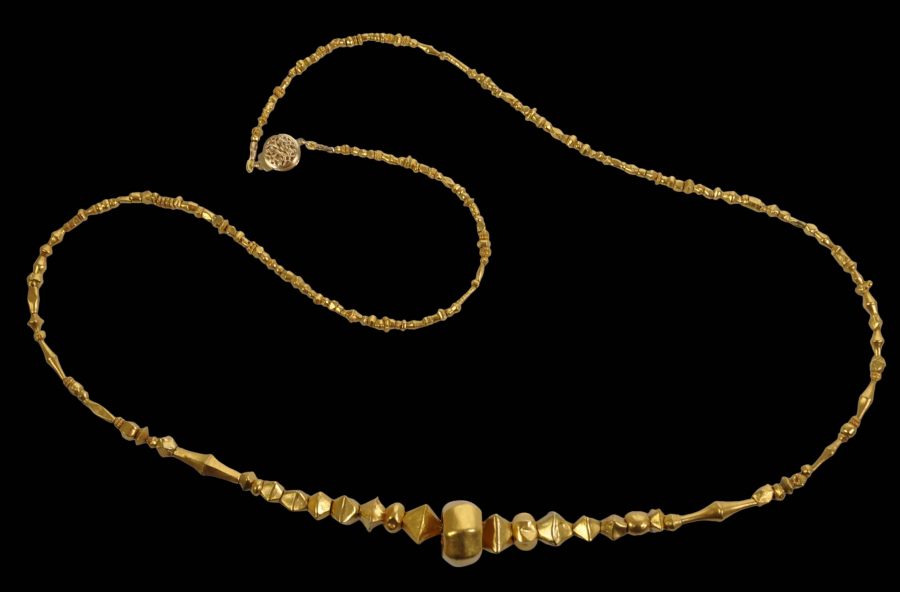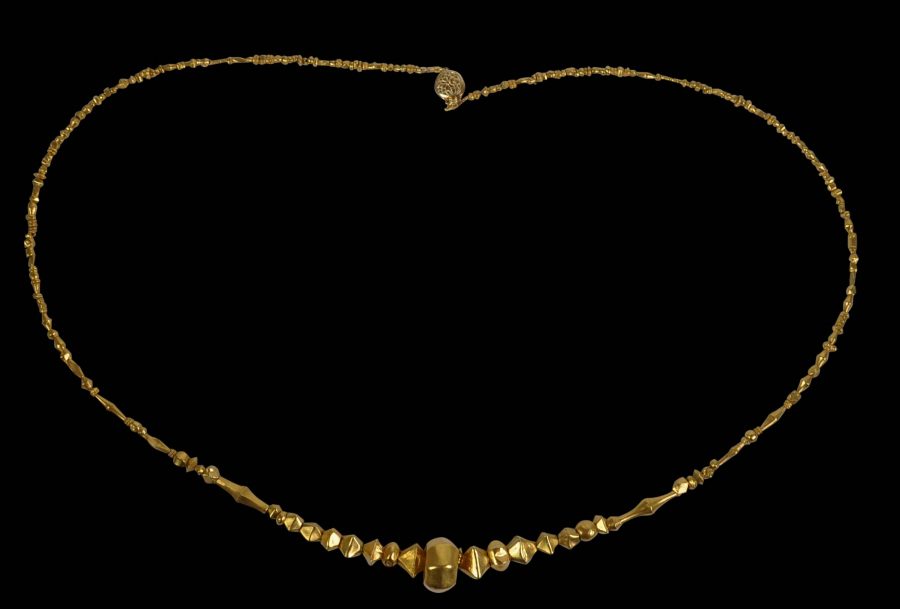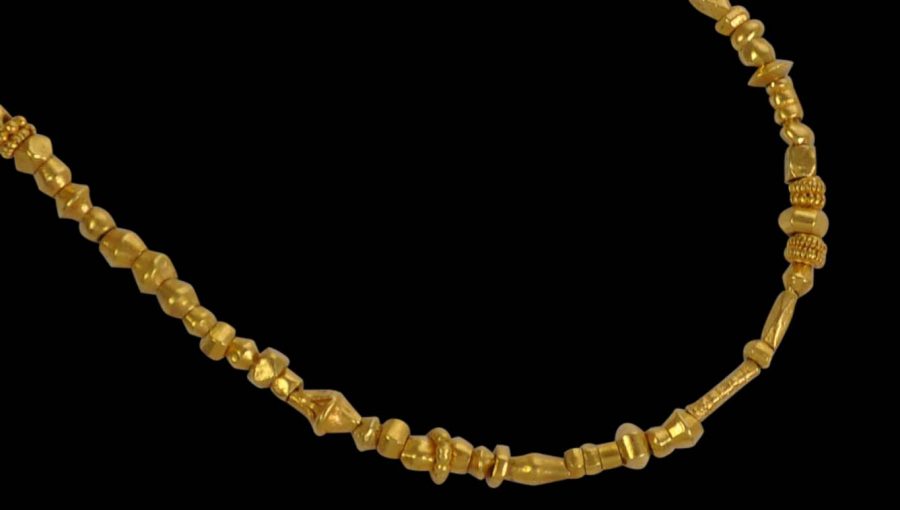This necklace of fine gold beads from Java’s Early Classical Period comprises dozens of beads of graduated sizes and a variety of shapes and includes beads that are cylindrical, of square or cushion-shaped.
The beads are arranged so that the largest are in the middle of the necklace and those that are smallest and finest are towards the ends.
Each bead is of solid gold rather than gold sheet filled with lack, so each seems appropriately heavy for its size.
Examples of necklaces of related gold beads are illustrated in Geoffroy-Schneiter (2011, p. 249) and Miksic (1990, p. 66).
Large quantities of gold jewellery and other items have been found in central and East Java dating from this period. It was a time when Buddhism and Hinduism seem to have peacefully co-existed at the same time.
The necklace has been restrung so that it is safe to wear and a modern clasp has been fitted. (Beads of this period typically are found with the stringing rotted away and no clasp.) The gold content of the beads varies but is at least 14 carats.
References
Bremer, S., Goud der Goden: Uitt het oude Java, Wereldmuseum Rotterdam Publishers, 2014.
Geoffroy-Schneiter, B., Asian Jewellery: Ethnic Rings, Bracelets, Necklaces, Earrings, Belts, Head Ornaments, Skira, 2011.
Miksic, J., Old Javanese Gold, Ideation, 1990.





